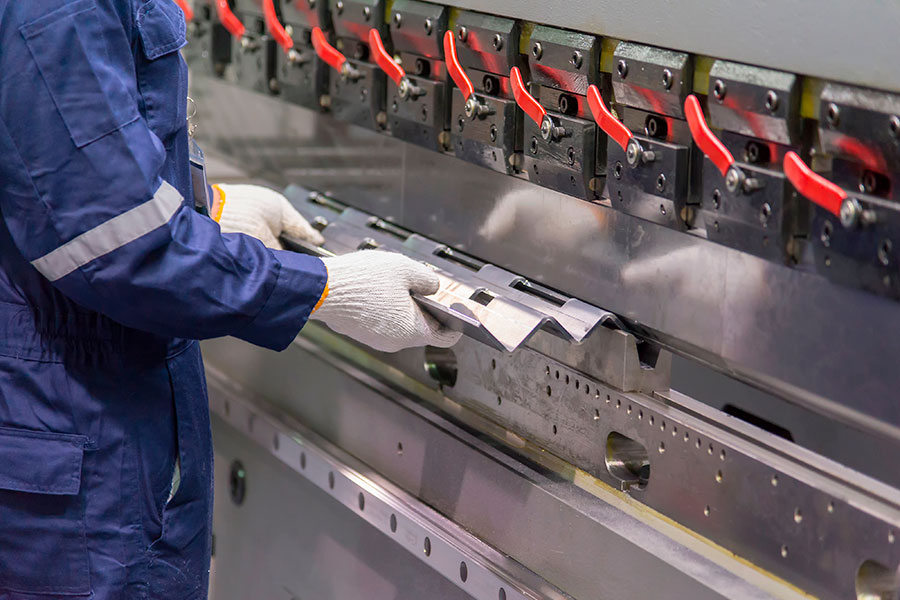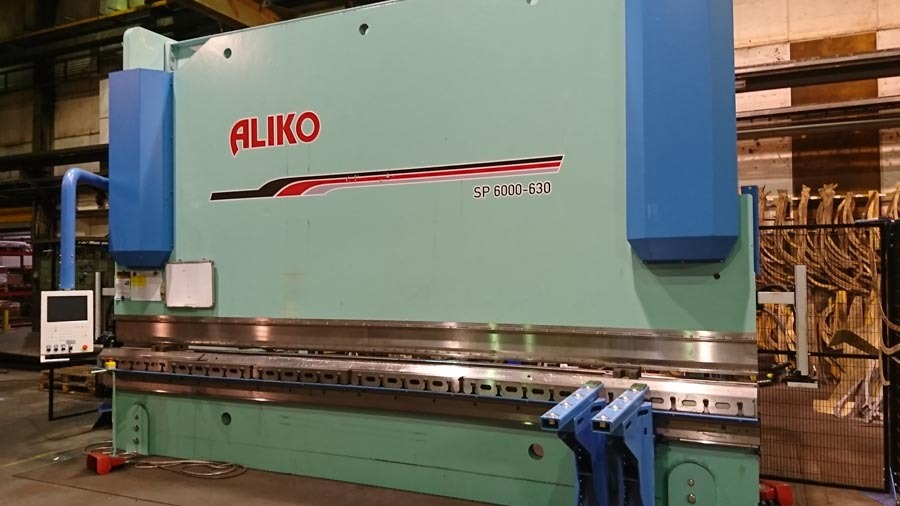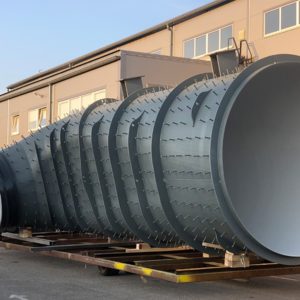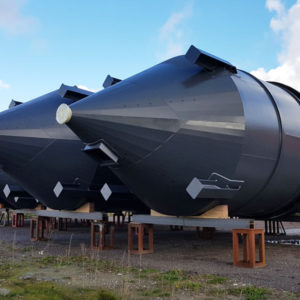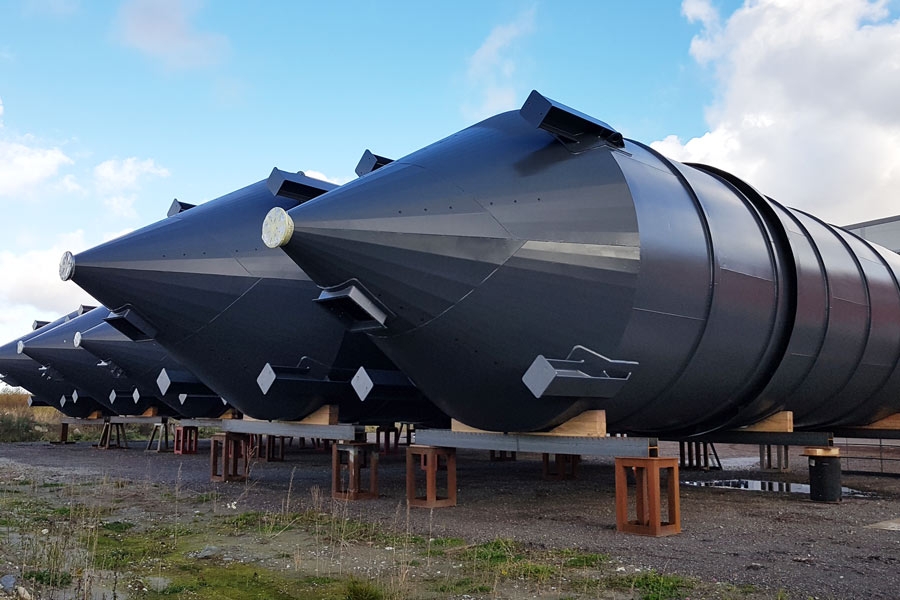Introduction to sheet metal bending
Metal fabrication is a vast and extensive process that has many different variations and provides parts and details for a massive number of goods, both customer-related and business-specific. Sheet metal is one of the most popular material types here, and there are plenty of different operations that can be used to form a sheet metal plate into a desired shape.
Some examples of sheet metal processes and operations that could be performed include cutting, rolling, welding, forming, and so on. However, there is one operation that is pretty much the most commonly used in the metalworking industry, and that is bending.
Bending is known by several different names, such as edging, die bending, press braking, flanging and folding. However, the purpose of this process remains the same – to deform a material (a metal sheet) into a specific angular shape. The process of bending as a whole generally consists of applying force to a material before it takes a necessary shape – and there are many ways to do so.
Commonly used bending types
Since bending as a whole is a relatively popular method, there are also multiple different types of bending out there. The different bending types we are going to go over below are V-bending (a group that consists of three different types of bending – air bending, bottoming and coining), wiping, roll bending, folding and step bending.
It is worth noting that over 90% of the bending is done using either bottoming or air bending. All three of the V-bending methods also are the only ones using a press brake to do its job, while other types use more specific machinery.
Air bending is our first example, it is a bending method that uses a press brake to force a punch into a die, but not far enough so that the punch itself doesn’t touch the walls of the die. This is probably the least accurate method of sheet metal bending, but it’s still extremely popular due to its flexibility – it can make many different bent shapes using the same machinery and only making adjustments to the amount of force applied.
Bottoming, on the other hand, is a sheet metal bending method when a punch is pushed down more, making it touch the edges of the die. This method is rarely used to create anything but V-shapes, but it does have a lot of variation in terms of a possible angle of a V-shape.
Coining is the last bending method that uses a press brake, and it is also the one that is not as popular in the modern world. The main difference between coining and air bending/bottoming is that coining applies several times more force to the material than any of the two methods above. Coining offers a lot more precision than other methods, but it’s not as popular as it was some time ago due to the overall rise in machinery’s accuracy and quality in recent years.
Now that we’re done with sheet metal bending types that use press brakes, it is time to go over the rest of the list, starting with folding. Folding is a process that is similar to wiping in its nature – a part of the metal piece gets clamped in place, and then a clamping beam is rising to bend the metal to a needed shape. It can provide both positive and negative angles, and is mostly used to provide V-shaped bending operations.
Roll bending is pretty much the most unusual method on this list, since its machinery type consists of three cylindrical rollers that are constantly spinning, turning a sheet metal into some sort of an arc. As the name suggests, its biggest use cases are round shapes – tubing, pipes, and so on.
Wiping (wipe bending or edge bending, in some cases) is our first choice of bending type that uses machinery – mostly bar folders and cornice brakes. It is faster than folding, but it also has a higher probability to inflict a lot of damage to the surface of the metal in the process of deformation.
Step bending is the last example on our list (it is also sometimes called bump bending) – is also quite unusual in its own way. It operates b
y creating several smaller V-shaped bends in quick succession with the usage of a press brake, making one large smooth (curved) bend for a metal piece.
This list is by no means complete, there are many other ways to perform a bending process, but these are some of the more commonly used examples to serve as a representation of how vast this field is as a whole.
Tips for sheet metal bending
Sheet metal bending is not a particularly complicated process – even if it seems to look like one, its complexity mostly lies in the machinery itself and in various calculations in regards to the bent metal piece. We can share five general tips about sheet metal bending to make sure that it is easier to comprehend this topic:
- Springback. A springback is a natural occurrence that happens when a material is bent into a specific shape using sheer force – it is natural for a metal plate to “spring back” a bit after the bending is complete. This kind of additional deformation, no matter how small it might be, should be taken into consideration when planning the creation of metal parts with specific shapes and angles.
- Allowance. Speaking of quality and accuracy, allowance is also an important part of the bending process – it is a difference between the length of the original metal piece and the combined length of two “legs” of a finished (bent) piece. It is not particularly surprising, since the whole idea of a bending process is deformation, and deformed materials are usually longer than they originally were. It happens because the outside of the bent sheet metal piece gets elongated in the process of bending, thus changing the total length of the finished piece.
- Sheet metal material malleability. There are many different types of sheet metal – and each of these types has its own parameters, especially when it comes to malleability. Malleability is the capability of a material to bend into sharp angles without breaking or cracking. This parameter is quite complicated and mostly depends on the nature of the metal itself – with aluminum, copper and alloy steel being more malleable, and titanium, bronze and brass being less malleable than the norm.
- Process position holes. Process position holes are not a requirement, but they are highly recommended to use on the parts that you are about to bend, since they serve as one of the visible guarantees of a precise metal piece positioning within the machinery. Not using position holes greatly increases the chances of a sheet metal moving during the bending process, so it’s highly recommended to use them.
- Press brake bending types. There is a reason why press brake types of bending are some of the most common ones on the market – it is far easier to work with and has a lot more versatility than most of the machinery-related bending types. It is highly recommended to use either air bending or bottoming for your needs, unless you need an extremely specific shape or angle that cannot be done using these two types of bending.
Conclusion
Sheet metal bending is a processing method that allows steel and metal being bent without welding. It is not a particularly complicated process, but it has a lot of variation and quite a lot of nuances. This article should help with better understanding of how nuanced and different bending is as a process.
The high precision CNC Aliko Press Brake 6000/630, which Levstal is using, allows sheet metal bending of up to 6000 mm wide and up to 50 mm thick. At the request of the customer, the company can take on the design of the parts, as well as various ancillary equipment for the customers to make their own workpieces.

